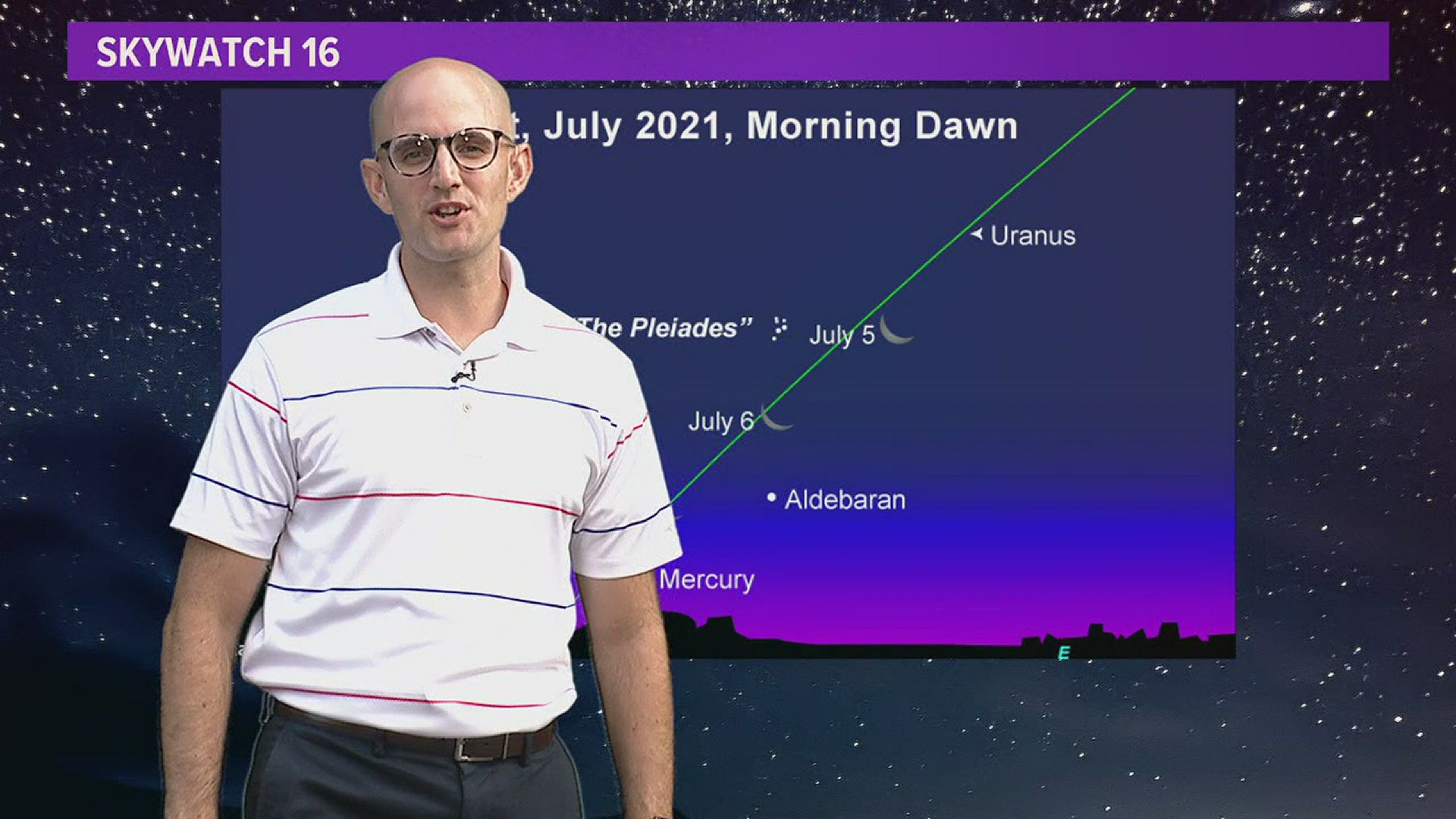It will pay to be an early bird, especially if you're interested in checking out our waning crescent moon.
But our waning crescent moon will have some guests on the morning of July 7th. Early Wednesday morning, pre-dawn, you'll be able to find the Pleiades star cluster as well as the Aldebaran and Mercury on either side of our crescent moon.
You'll want to look in the eastern horizon pretty low so you'll need a high vantage point.
This is something you can see basically at any time especially through the month of July.
The summer triangle isn't a constellation but rather an asterism. So those three different stars, Vega, Deneb and Altair, are part of their own constellations but they make a triangle called Astersim.
And you can use this to find three of our smallest constellations in the night sky.
Delphinus the dolphin will be below the summer triangle.
Vulpecula the fox will be in the middle and Sagitta, that's the arrow.
Now you'll need a really dark sky to see those three but you'll use the summer triangle as your guide.
For both early morning risers and the night owls too, both will get the vantage point of the International Space Station flyover.
We have some decent passes coming, one on Sunday around 4:45 a.m., looking to the northwest.
Also on Monday at 10:17 p.m. look to the southwest.
Both of those passes are six minutes long.
It's been a while since we've had a good view of the International Space Station and it looks like our chance to see it is coming up.

